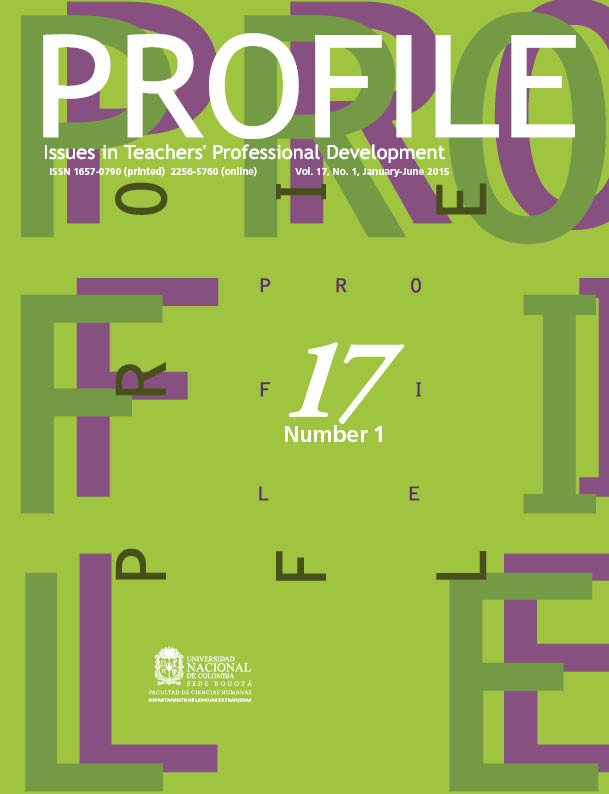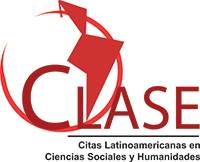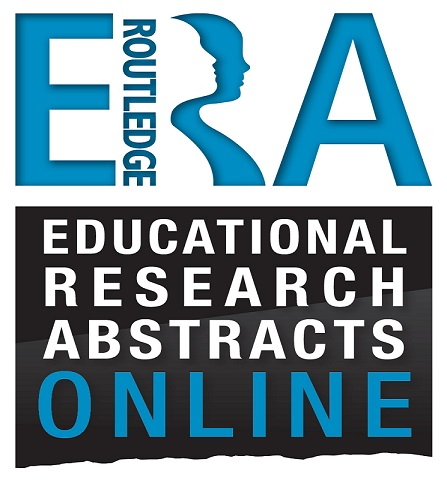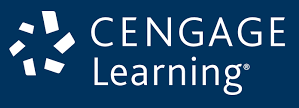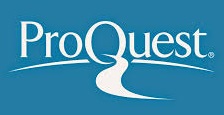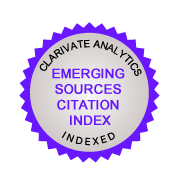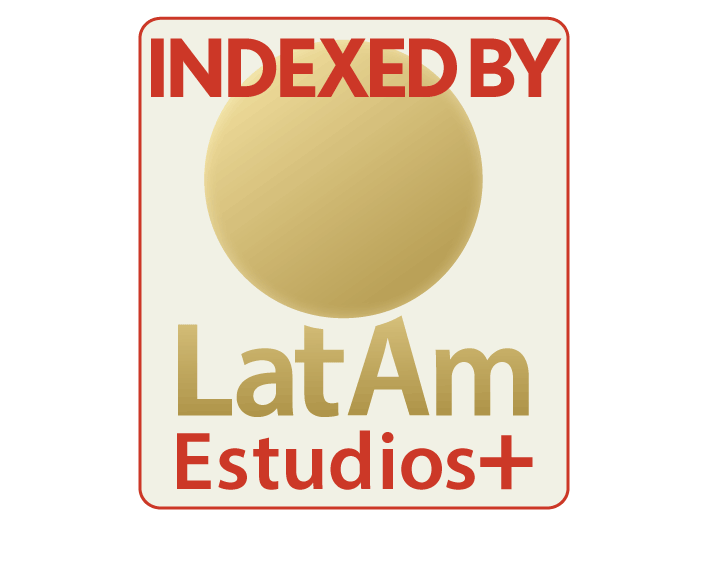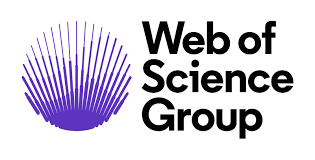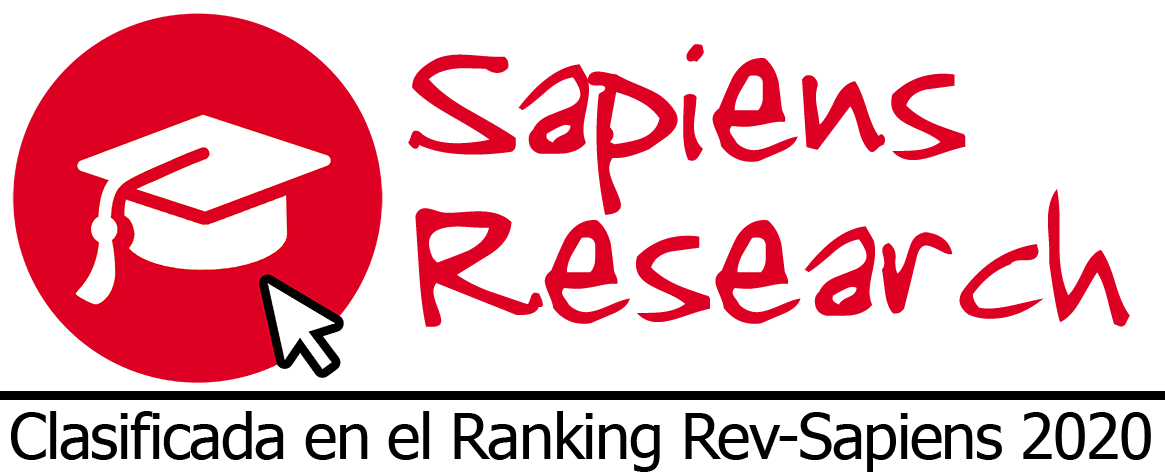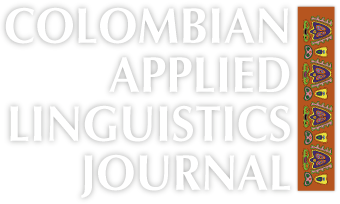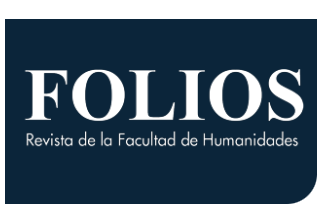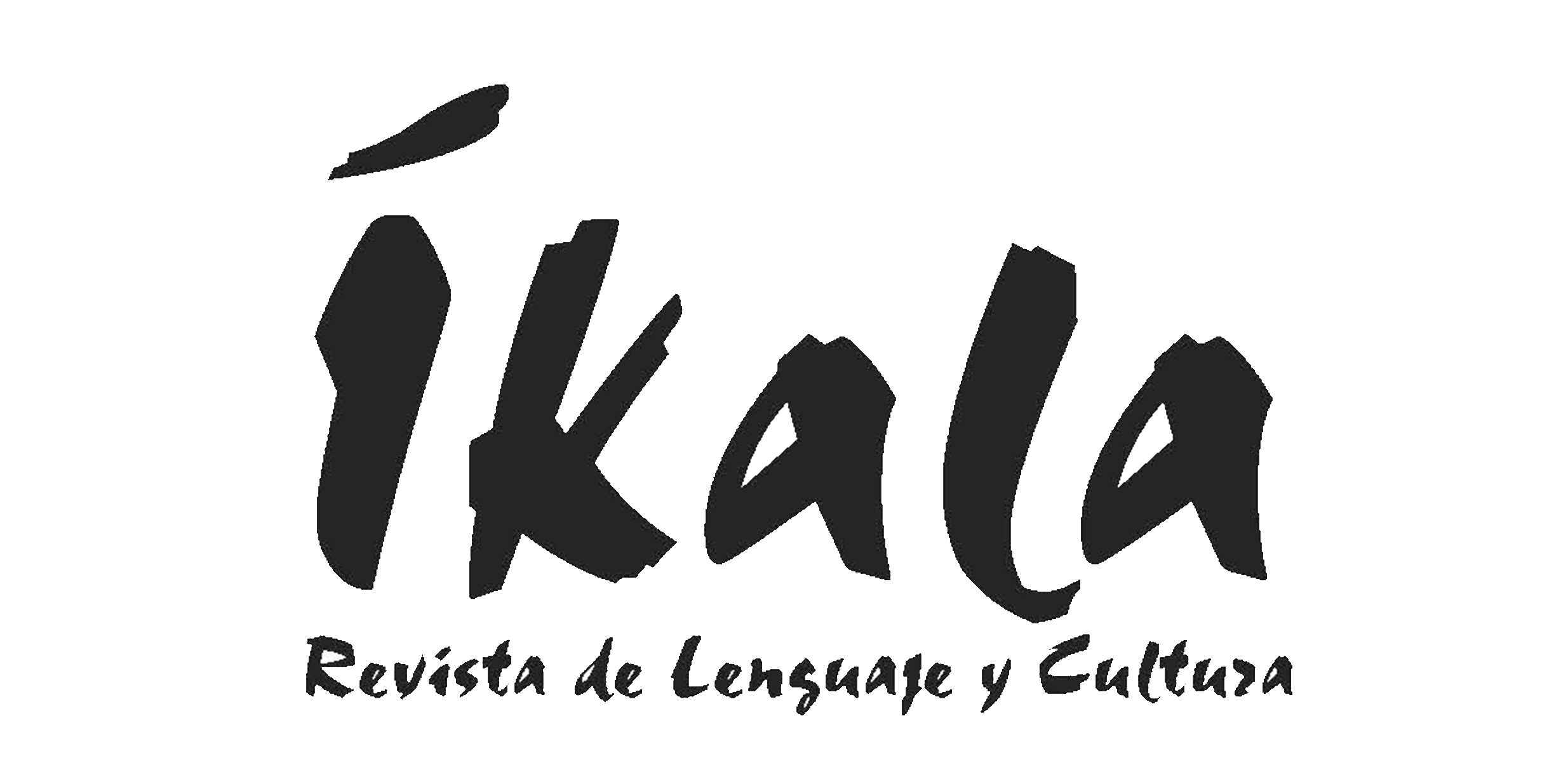Training in Metacognitive Strategies for Students’ Vocabulary Improvement by Using Learning Journals
Entrenamiento de estrategias meta-cognitivas para mejorar vocabulario a través de diarios de aprendizaje
DOI:
https://doi.org/10.15446/profile.v17n1.41632Keywords:
Evaluating, language learning strategy training, metacognition, metacognitive strategies, monitoring, planning, vocabulary (en)Entrenamiento en estrategias para el aprendizaje de lengua, estrategias metacognitivas, evaluar, metacognición, monitorear, planear, vocabulario (es)
This study examined the effects of metacognitive strategies to help beginning young learners with difficulties increasing and retaining vocabulary. This was a qualitative study in which participants first went through metacognitive strategy instruction to provide awareness of learning strategies. Following this instruction, students underwent a set of five interventions based on the cognitive academic language learning approach instructional model. These interventions, together with journaling progress, were used to train them in the use of the metacognitive strategies planning, monitoring, and evaluating. The findings showed that metacognitive strategy training has positively contributed to vocabulary acquisition skills, as participants were able to raise consciousness about some learning strategies and the use of metacognitive strategies to increase their vocabulary learning.
PROFILE
Issues in Teachers' Professional Development
Vol. 17, No. 1, January-June 2015 ISSN 1657-0790 (printed) ISSN 2256-5760 (online)
How to cite this article (APA 6th ed.):
Diaz, I. (2015). Training in metacognitive strategies for students’ vocabulary improvement by using learning journals. PROFILE Issues in Teachers' Professional Development, 17(1), 87-102. https://doi.org/10.15446/profile.v17n1.41632.
Training in Metacognitive Strategies for Students’ Vocabulary Improvement by Using Learning Journals
Entrenamiento de estrategias meta-cognitivas para mejorar vocabulario a través de diarios de aprendizaje
Itala Diaz*
Universidad de Córdoba, Montería, Colombia
This article was received on January 18, 2014, and accepted on October 20, 2014.
This is an Open Access article distributed under the terms of the Creative Commons license Attribution-NonCommercial-NoDerivatives 4.0 International License. Consultation is possible at http://creativecommons.org/licenses/by-nc-nd/4.0/.
This study examined the effects of metacognitive strategies to help beginning young learners with difficulties increasing and retaining vocabulary. This was a qualitative study in which participants first went through metacognitive strategy instruction to provide awareness of learning strategies. Following this instruction, students underwent a set of five interventions based on the cognitive academic language learning approach instructional model. These interventions, together with journaling progress, were used to train them in the use of the metacognitive strategies planning, monitoring, and evaluating. The findings showed that metacognitive strategy training has positively contributed to vocabulary acquisition skills, as participants were able to raise consciousness about some learning strategies and the use of metacognitive strategies to increase their vocabulary learning.
Key words: Evaluating, language learning strategy training, metacognition, metacognitive strategies, monitoring, planning, vocabulary.
Este estudio examinó el efecto de las estrategias meta-cognitivas para ayudar a estudiantes con dificultades para aumentar y retener vocabulario en inglés. Este fue un estudio cualitativo, en el cual se instruyó en el uso de estrategias meta-cognitivas proporcionando el conocimiento de estrategias de aprendizaje. Luego, se aplicó un conjunto de cinco intervenciones basadas en el método académico cognitivo para la enseñanza de lenguas. Estas intervenciones, junto con el uso de diarios, se utilizaron para entrenarlos en el uso de estrategias meta-cognitivas. Los resultados mostraron que el entrenamiento de estrategias meta-cognitivas ha contribuido positivamente en la adquisición de vocabulario, ya que los participantes fueron capaces de propiciar el conocimiento acerca de algunas estrategias de aprendizaje y el uso de estrategias meta-cognitivas para aumentar su aprendizaje de vocabulario.
Palabras clave: entrenamiento en estrategias para el aprendizaje de lengua, estrategias metacognitivas, evaluar, metacognición, monitorear, planear, vocabulario.
Introduction
There is a belief that the effectiveness for incor-porating learning strategies to support students’ classroom goals can be fostered by providing learners with training and practice in learning strategies. These strategies are considered as “actions taken by students to make learning easier, more effective, and more self-directed and more transferable to new situations” (Oxford, 1990, p. 8). Applying these actions encourages participants’ knowledge on how they learn new vocabulary and find meaning in the language developed in class. In regard to these actions, Flavell (1979) refers to this process as building students’ knowledge of the operations through which they achieve effective learning. Therefore, this study examines the strategy training in vocabulary learning in participants who are A1 level according to the Common European Framework (CEFR) and who also have difficulties retaining vocabulary. Having noticed their lack of vocabulary through a needs analysis and their failed efforts at communication in most of the class, the teacher wants to see whether their training in metacognitive strategies results in more effective vocabulary learning. Consequently, training students in these procedural strategies help them gather and exploit tools that help with managing their language learning process. With this in mind, training learners in metacognitive strategies such as planning, monitoring, and evaluating is considered as one way of improving their vocabulary acquisition by enabling them to manage techniques to control, supervise, and regulate their learning process (Rubin, 1981). That is to say, if learners can be made aware of their own learning strategies, they may develop tools that will serve them well into the future by helping them monitor their cognitive and linguistic processes in their own vocabulary learning.
Considering this as the main variable of this study, this research project studies the effect of metacognitive strategy training using learning journals in the students’ ability to improve their vocabulary retention.
Context
The English Language Center at Universidad de Córdoba is a public institution for teaching and learning different languages in Montería, Colombia. This institution helps students who want to receive instruction in foreign languages, especially in English. It offers different language levels according to students’ ages. Classes are held every Saturday from 8:00 a.m. to 12:00 p.m. The Center’s English teaching philosophy is based on providing opportunities for students to experience real communication as they undertake their learning.
Participants
Participants in the study were third, fourth, and fifth grade students whose ages ranged from 8 to 10, with a total of six girls and four boys. Their socioeconomic status was middle class and their English level is A1 as established by the CEFR. They were chosen for the study because they were having difficulties in class conversations, as they did not manage the necessary vocabulary to express or clarify their communication purposes.
In addition, to confirm the above information a needs analysis was carried out in the participant’s first language. It was found that 45% of them think that they possess a good range of vocabulary and 60% said they never set objectives for learning new vocabulary. It was also noticed that they were not aware of learning strategies even though they did in fact use them. As a result of this analysis, an additional finding was that students struggle to learn new words and do not reflect on the process they undergo while learning.
Researcher’s Role
The teacher and the researcher were the same person during this study. The teacher’s primary role was that of an observer and that of the researcher identifying the classroom difficulty that needed to be improved in everyday classroom practices, framing the research question for this study. This role then transitioned into one of a designer and driver, designing the research plan, interventions, and all the data collection instruments; after that, a trainer and a facilitator, in which she guided participants throughout the process, managing, analyzing, and supporting the participants’ training. Finally, reporting events and data from the process, following high ethical standards that cemented the purpose of this research.
Theoretical Framework
This study is based on the framework of training learners in metacognitive strategies (MTS), which include planning, monitoring, and evaluating in order to foster vocabulary learning. Therefore, the following review will outline a significant perspective that addresses the use of MTS in classroom practices. The subsequent review covers metacognitive strategies, language learning, strategy training, vocabulary learning, and journal study.
Metacognitive Strategies (MTS)
Recently, educational entities have paid importance to strengthening metacognition to support and regulate students learning to prepare themselves with the skills at signifying and organizing beliefs about their own knowledge. For this process, researchers have defined the concept of metacognition. Cross and Paris (1988) conceived metacognition as “the knowledge and control children have over their own thinking and learning activities” (p. 131). In short, participants are aware of the particular cognitive strategies and the way to move toward given tasks, not only for the learning of vocabulary but for any kind of learning action so that they will be able to come across and extend those strategies and knowledge into new or similar situations. In this way, metacognition is like the enabling process of vocabulary learning, incorporating strategy training to predetermine and decide upon what is necessary to achieve learning purposes and vocabulary goals. In addition to this idea, important research has established that metacognition is the engine that drives self-directed learning. According to Knowles (1975), self-directed learning:
Is that process in which individuals take the initiative, with or without the help of others, in diagnosing their learning needs, formulating learning goals, identifying human and material resources for learning, choosing and implementing learning strategies, and evaluating learning outcomes. (p. 18)
If metacognition is a way of fostering learner knowledge about the thinking process, metacognitive strategies are then a way of developing that knowledge. The deployment of several activities and ways of approaching task goals can certainly be viewed as strategies to fulfill learning goals. According to O’Malley and Chamot (1990), in establishing the learning strategies as sets of actions in which students feed their own learning, learning strategies contribute to the improvement of students’ learning process. Anderson (2002) states, “the use of metacognitive strategies activates one’s thinking and leads to improved performance in learning in general” (p. 3). This means that learners, who use these techniques, have advantages in understanding their own role in learning since they are aware of different ways of approaching learning goals. Similarly, Rubin (1987) states, MTS are “management steps or operations by which learners control and manage their learning or problem-solving process via planning, monitoring, evaluating, and modifying their learning approaches” (p. 23). That is to say, using MTS can make participant-directed learning possible by establishing the new thought processes to achieve learning tasks on their own, while simultaneously causing them to reflect on their performance.
For the purposes of this study, metacognitive strategies are considered as a way of providing participants with more opportunities for reasoning out their own process of learning. Engaging with the subject matter and using these methods encourage them to assume responsibilities and logical understanding of their own cognitive processes. In essence, O’Malley and Chamot (1990) define three steps to use as strategies when developing a task. First, plan for the task, which gets participants engaged with the material as they set out task goals. Next, monitoring the task allows participants to examine, regulate, and manage their comprehension as they progress during the task. The final step is evaluation, where participants self-evaluate the process they underwent and how they developed the task. The outcome is that participants learn to evaluate their own learning process while simultaneously becoming familiar with journaling and more self-direction. The goal is for participants to internalize strategies that can become habitual and later skills for learning and retaining new vocabulary in a more self-directed way.
To shed light over a broader view Martinez (2006) states that recent research suggests that metacognition improves with adequate instruction, providing convincing evidence that supports its importance in the instruction and learning process.
Additionally, Martinez (2006) implies that whether or not the process of developing meta-cognition is adequately initiated, it benefits the learning process as it is supported. This is linked to the purpose of this study since participants can start the reasoning of their own process of learning. In the same light, a study on third graders found out that the metacognitive instruction significantly improved their academic achievement. Their improvement is reflected in the domains of reading comprehension and vocabulary, as the systematic instruction of these strategies led to positive effects in understanding written texts. This effect could be observed through different ways of representing expository texts, becoming more aware while they were reading, and figuring out the vocabulary in the texts (Boulware-Gooden, Carreker, Thornhill, & Joshi, 2007).
Language Learning Strategy Training
Oxford (1990) defines learning strategies as “operations employed by the learner to aid in the acquisition, storage, retrieval, and use of information” (p. 8). That is to say, learning strategies are defined as the way learners learn and recall information. This definition is expanded to what Nunan (1999) states by calling them “the mental and communicative process that learners deploy to learn a second language” (p. 55). In other words, students’ learning strategies can influence the success of their language learning. “Their active use of strategies helps them attain higher proficiency” (p. 60). That is to say, learning strategies are the individual actions that learners take to succeed in a language learning task or improve their target language proficiency. A study by Lam (2010) about metacognitive training establishes an important point to the root of this study as the strategy instruction should begin with helping students to become aware of knowing about the strategies and which strategies they are already using because it may result in turning students’ attention away from non-task specific strategies towards task-specific strategies, matching them with the type of task. In that way, raising students’ awareness in trying more types of strategies, broadening the spectrum of learners’ pre-existing non-target and task-specific strategies in future contexts. This situation supports this study in providing A1 learners with training in metacognitive strategies to know about the strategies they have at hand and to alert their use for upcoming settings. Similarly, a report by Chamot (2005) in the field of language learning strategy training states: “Strategy instruction should be explicit, that is, that the teacher should inform students about the value and applications of the strategies” (p. 23). It brings light to this study as the language instruction for participants is approached early on through MTS training based on the learning task, their instructional model, and students’ needs.
In addition, as Rubin (2005) and Chamot (2009) have stated, good language learners have an array of learning strategies to call on, to select, and employ when necessary. This is the main reason why the use of learning strategies is important to this study, as students undertake the strategy training. It is possible that they may succeed in learning a second language due to the correct application of these strategies that make learning more manageable. Moreover, Chamot (2005) states: “Once a learning strategy becomes familiar through repeated use, it may be used with some automaticity” (p. 112). In other words, once students have a certain amount of experience in using and applying learning language strategies, they may develop the ability to automatically tap into their learning process.
By following the Chamot and O’Malley (1994) instructional method, referred to as the cognitive academic language learning approach (CALLA), we can say the purpose of this study was to build a useful framework for direct language learning strategy instruction, in which the instruction was based on a five-phase recurrent cycle. This cycle included an introductory phase to explain the importance of metacognitive learning strategies; a teaching phase to present or model the learning strategies; a practicing phase to offer opportunities to let students practice the learning strategies with the learning task; an evaluating phase to use the learners’ journals and have students reflect on their own learning and evaluate their vocabulary learning; and lastly, a phase for the application of learning strategies to allow students to reflect, become aware of strengths and weaknesses, and participate actively in their learning process. Finally, an expansion phase is defined as applying what students have learned to their own lives (Chamot, 2009). In conclusion, by implementing this learning strategy training, participants were provided with the opportunity to develop habitual procedures for enhancing learning strategies and promoting students’ awareness of their own learning processes.
Vocabulary
Vocabulary is the foundation on which a language is taught. Vocabulary is “the knowledge of the meanings of words” (Herbert & Kamil, 2005, p. 3). In other words, it can be said that vocabulary constitutes information coded in language meaning. There are two different manners of conveying information through language: oral and written. According to Herbert and Kamil (2005):
The two forms that envision vocabulary are the oral and the imprint form, in which oral represents the receptive skill that allows learners to understand or recognize the words, and the productive skill which allows students to write or speak using different vocabulary. (p. 14)
Oral vocabulary is the set of words in which a person knows the meaning when speaking or reading aloud. Written vocabulary is a set of word meanings encoding information that is meant to be written or read silently. Vocabulary, then, refers to well-known words that are used and recognized frequently by a person. For this reason, vocabulary is important in the English language teaching (ELT) process because it seeks to engage a successful language learner who is able to recognize and produce communicative functions. Hence, the learner’s vocabulary acquisition is seen as “learning words, learning phrases and chunks” (Cameron, 2001, p. 72). In oral and written form, vocabulary acquisition helps improve spontaneous communication in class, supporting the teaching and learning of other language skills, such as listening, writing, reading, and speaking (Chengqian, 2009). Consequently, the improvement of vocabulary acquisition skills also has other language skills benefits, providing a foundation for a different area of language learning that engages the target language. For this reason, vocabulary learning is conceived through metacognitive instruction by training the learner in the use of MTS turning his/her preexisting abilities into deploying different ways of figuring out conceptual understanding and creating deeper understanding of a word rather that applying traditional ways as memorizing or translating. Lam’s (2010) study on third graders accounts for this decision as it shows evidence regarding metacognitive instruction for the learning of vocabulary. It actively engages students in the process of creating meaning through task-based strategies.
The importance of vocabulary in the performance of language learners is also the focus of several researchers who have worked on different cognitive strategies for teaching vocabulary. Herman and Dole (1988) consider that when vocabulary teaching is started early and individually trained, it might help the learning of other skills, mainly reading and listening. For this reason, providing students with ways of improving their vocabulary storage, recognizing their learning strategies to be able to draw meaning and understanding the target language equips participants with learning alternatives for new settings.
Journal Study
A journal is a report of data that is recorded from introspection to describe studies on one’s teaching and learning practice where the journalers’ perceptions are also included. According to Bailey and Oschner (1983), a journal study is “an account of a second experience as recorded in a first-person journal” (p. 189). In other words, journals were the instruments to record experiences from participants’ introspection as well as the means for the learners to describe the teaching and learning process. During the period of implementation, journals proved to be of great value because they were one of the instruments used to collect qualitative information in order to find data documenting patterns and events that emerged during the analysis. It was kept during each lesson after participants completed their activities and then registered their own perceptions about the lesson development. Participants were expected to write ideas about lesson events and experiences while using learning strategies to describe his/her task performance. Journals were then the primary source to find out about students’ engagement in using the task-based strategies. This is further supported by Chamot’s (2005) report manifesting that language learning strategies are identified through self-report, since it is the only way to identify a leaner’s mental processing. A research study on self-access learning manifests significance for students’ capacity in making decisions and evaluations, developing reflectivity and awareness of their own learning processes (Herrera Díaz, 2012). This idea complements the purpose of using journals since it is to have a space to place all that reflective knowledge.
In the same way we can say teacher’s notes play a very important role in this study, since they help to record entries from the teacher observations at each intervention. A study from Lopera Medina (2013) concludes that the use of teacher’s journal in a study not only served as a useful and objective tool to gather information, but also to cement information from other instruments as they are confronted. This study also conveyed a teacher journal on students’ language processes, keeping track of each student’s anecdotes of what learners do, understand, and misunderstand in class and giving accounts from the whole process. This further supports the purpose of this study.
Method
Type of Study
This study is based on a descriptive-qualitative analysis. Nunan and Bailey (2009) define this type of study as a systematic, interactive process of identifying an issue, problem, or puzzle to identify in any context. Through this frame, the teacher can inquire her/his own classroom practice in ELT reflecting on the puzzle observed and intending to improve it in order to significantly make more effective decisions about teaching.
The research plan is then carried out reflecting on the whole process and the repeated cycle, allowing this study to self-reflect on the training in improving vocabulary learning via MTS. Based on this principle, it could be determined whether or not MTS helped A1 learners improve vocabulary learning skills throughout the application of systematic procedures like planning, monitoring, and evaluating. Moreover, Kemmis and McTaggart (1988) have pointed out that when new thoughts are applied to educational environments, these can be a means to improve knowledge in the learning and teaching practices.
This study included a descriptive-qualitative analysis for interpreting participants’ awareness and perceptions. Consequently, participants were randomly assigned to the task for the purpose of collecting data in the strategy training during the intervention period, and offered a subjective description and explanation of the students’ performance (Kvale, 1996).
The research consisted of training students in MTS (planning, monitoring, and evaluating), following Chamot and O’Malley’s instructional model (1994). Five interventions were also applied, developing activities intended to enable students to use and practice these strategies as well as their vocabulary learning skills.
Data Collection
In this study, the data were collected by using different observational methods, including a questionnaire, a mind map, student journals, and field notes. These instruments were selected according to students’ age and language proficiency level to obtain different insights from participants and to elicit information for the further data analysis.
Questionnaire (Needs Analysis)
This data collection instrument was focused on obtaining the basic and relevant information about the students’ possible lack of vocabulary as perceived by the teacher, needs, and knowledge about metacognitive strategies for the research project (needs analysis). It was also previously piloted. Babbie (2001) defines a questionnaire as “an instrument specifically designed to elicit information useful for analysis” (p. 239). The identification of needs is a process of describing the “problems” of a target population. It was applied to participants to evaluate students’ knowledge of MTS and lexical competence.
Mind Map
This elicitation tool was applied during the training to measure students’ knowledge of both everyday vocabulary and the selected vocabulary during the interventions, and to observe the students’ improvement. Mind maps would also provide evidence of learning and serve as a way for the participants to document their knowledge transformation (Radix & Abdool, 2013). The mind map was a concept map consisting of a diagram to structure knowledge around a single concept, determining students’ vocabulary range in everyday routines.
One mind map was applied at the pre-intervention stage to check participants’ knowledge on everyday vocabulary. A second mind map was then applied at the end of the interventions, with students filling it out according to each intervention topic, to compare initial and final vocabulary knowledge.
Student Journals
Students were asked to keep a written record to register the process of metacognitive strategies and vocabulary learning in their first language. According to Bailey and Oschner (1983), “a journal allows participants to report on affective factors, language learning strategies, and their own perceptions, facets of the language learning experience which are normally hidden or largely inaccessible to an external observer” (p. 189). As being this the tool to pique students’ reflection and introspection on the use of MTS, students were expected to report on their thoughts, perceptions and ideas about applying learning strategies during the lesson interventions. The reflection was over a process of five 60-minute lessons with a variety of activities that allowed students to use learning strategies to learn vocabulary. Journals were also guided with a group of seven open-ended questions and three closed-ended ones within four sections (planning, monitoring, evaluating, and vocabulary learning). That allowed students to bring up data and quality information from their mental processing on planning, monitoring and evaluating to address the research question.
Field Notes
Field notes were used to register observations directed towards the teaching and learning process of participants, focusing on vocabulary and strategy use during the intervention. This instrument was kept in a digital format, recording data after each intervention. The objective was to analyze the influence of strategy training in vocabulary learning. These field notes included general accounts of what happened during each intervention, for the purpose of collecting data that might respond to the research question.
Pedagogical Intervention
During the pre-implementation phase, a needs analysis questionnaire was applied in Spanish to examine participants’ knowledge of MTS and techniques used for learning their vocabulary. In the same way, a mind map was also applied to determine students’ needs in terms of lexical competence and participants’ homogeneity in vocabulary learning.
The implementation phase had to do with the strategy training. It lasted for a period of six weeks, in which five hours were used on MTS training and 10 hours on the application of activities designed to allow the use of metacognitive strategies on vocabulary learning.
Training
The researcher modeled strategies for learners to understand how to use vocabulary strategies. The strategies were associating, making sentences, using images, and so forth. After that, MTS were explained and detailed, covering the three components of: planning, monitoring, and evaluating, as stated by Chamot and O’Malley (1994). Each intervention included a lesson plan and students’ journal entries; every lesson was designed and reported in teachers’ field notes to record reflections about the study.
The lessons consisted of five stages in accordance with the CALLA model by Chamot and O’Malley (1994), a useful framework for direct language learning strategies instruction:
Preparation: This stage consisted of finding out what students knew about the topic through brainstorming concepts in relation to the suggested topic. Lesson objectives were explained and also established by learners to approach the lesson, as well as the new vocabulary to practice during the lesson.
Presentation: During this stage, the new infor-mation was presented and explained by modeling some language samples on how to use the new words, making sure of the understanding of the learning activity instructions.
Practice: The students worked on the different activities such as gap fill in, brainstorming, associating, and guessing for practicing the new vocabulary. The teacher provided guidance to help learners assimilate the new words, giving them the opportunity to work in groups and clarify understanding.
Self-evaluation: In this stage, the students evaluated their performance during the lesson in relation to the way they attempted to solve language problems they encountered, and their own learning experience with the use of metacognitive strategies. A second mind map and the same needs analysis were also applied again during this stage in order to measure student growth in retaining new vocabulary and the application of MTS after the interventions.
For the post-implementation, all the data were grouped and analyzed to determine the influence the metacognitive strategies had on the improvement of lexical competence in everyday vocabulary.
Data Analysis
The process of analyzing data was based on the grounded theory approach explained by Strauss and Corbin (1990) as “the construction of theory from data that implies to extract and develop concepts from the data collected” (p. 278). Considering this approach, this process was carried out by analyzing all the data that emerged from the journals, mind map, field notes and questionnaire, tagging individual phrases in an Excel document with different colors. Then the analysis was taken to match ideas with each other in order to consider indicators to assemble later categories and organize data according to their commonalities and triangulation patterns from the data which became the core categories and a picture of preliminary results.
Findings
Following the data analysis, this section explains the categories and sub-categories (see Table 1) that emerged during the analysis as a way of grouping and organizing encountered themes during data reduction. These help to answer the research question: How can training learners on planning, monitoring, and evaluating through learning journals help young learners improve their everyday vocabulary?
| Main Category | Categories | Subcategories |
|---|---|---|
| Awareness in the use of metacognitive strategies by means of learning journals to improve everyday vocabulary. | Category 1 Engagement of metacognitive strategies through the use of learning journals. |
Applying personal plans. |
| Raising consciousness of their needs (behavior and attitudes) by means of learning journals. | ||
| Category 2 Enhancement of learning strategies. |
Awareness of learning strategies. | |
| Employment of learning strategies. | ||
| Category 3 Development of vocabulary strategies. |
Effectiveness of the use of vocabulary strategies. |
First, the main category draws specific conclusions from the data collected. This shows an overview from the findings in relation to the effect of MTS training. The constant review of data, its permanent verification, and integration of main categories allowed the researcher to label the core category as the awareness in the use of metacognitive strategies by means of learning journals to improve everyday vocabulary.
The first category emerged in response to the research question in the application of MTS through the use of learning journals. It can be explained from two perspectives: Initially, in applying personal plans, data revealed that learners generated a plan for the task, setting personal goals to be reached during the lesson as shown in Figures 1 and 2. Subjects set and recorded personal objectives. For example, these included expected behavior outcomes or knowing the meaning of unknown words for the activity. Students also predicted what they would find in the activity.


The excerpts below illustrate participant journal responses in terms of planning and setting personal objectives for the lesson:
Excerpt 11
“Focus on the lesson” (S3), “pay attention” (S5), “be quiet in class” (S6), “I should behave” (S8), “sit down so I don’t get quarreled” (S10). (Students’ journals)
Excerpt 2
They seem to be more worried about behavior issues than the activity purposed. They set out goals in terms of behavior. (Teacher’s journal)
It can be said that during this planning stage the students got involved in the task of setting personal goals to be reached in the lesson. In terms of reflection, they did not carry out a satisfactory process, since the responses were not fully completed. Similarly, the needs analysis showed students’ awareness of learning strategies as well as recognition of the MTS (planning and monitoring). As an illustration of this, 80% of the participants manifested that they made plans for the lessons and also thought about the strategies they possessed.
Figure 1 shows student responses about the planning stage, presenting percentages that indicate participant awareness of MTS.
Even though participants were aware of the strategies they could use and when to use them, their process of auto evaluating task performance was weak. Their manifestations regarding this last stage were not clear in terms of what was expected, such as reflections about their lesson performance. One factor that could explain this issue is the participants’ ages, which ranged from 8 to 10 years old, as they seemed to be confused by the idea of formulating a self-evaluation process.
Second, raising consciousness of their needs (behavior and attitudes) by means of learning journals is another sub-category to explain the enhancement of metacognitive strategies. Embedding MTS has some impact on students’ learning process; it has to do with their initiation of planning for the lesson. That is to say, the development of their ability to express what they know and assist their learning process by means of setting personal goals (Mercer & Mercer, 1993). Likewise, MTS contributes positively to the improvement of vocabulary learning skills, as student journal entry reflections showed more consciousness in terms of knowing what to do when the students faced difficulties.
Excerpt 3
In terms of the metacognitive strategies, they knew the steps to follow after each task. They seem to be more concerned with the strategy they use to find out the information they do not know. (Teacher’s journal)
Learners manifested independence in recognizing difficulties and ways of managing the activity proposed. For example, when they encountered problems with the meaning of some words during the task, that difficulty was assisted by asking a friend or the teacher, looking the words up in a dictionary, or associating it within the context. This idea of being conscious learners is further supported by Wenden (1987), who states this process is the set of acquired skills about their own cognitive process to apply, use, and gain knowledge in various situations.
Excerpt 4
The teacher noticed that S5 at the moment to start working in pairs established steps to follow in the activity and for each group mate. (Teacher’s journal)
Participants identified when their strategies were effective or needed revision as they encountered the problems they had predicted. They were also aware of some difficulties they predicted they would find, as well as the possible solutions, implementing vocabulary strategies as necessary. For example, they indicated they had problems with meaning as they stated “no saber las palabras” (not knowing the meaning of some words) but they immediately came up with a possible solution, stating “buscar en el dictionary” (look up in the dictionary). Figure 3 illustrates the most common solutions learners proposed when they encountered difficulties with word meanings.

Excerpt 5
They get the text and started to read several times in order to understand it. S5, S8, and S10 checked the dictionary to find out some word meanings and so be able to understand the text about Carl’s reading, highlighting the words in the texts. (Teacher’s journal)
Regarding Category 2, defined as the enhance-ment of learning strategies, two subcategories were identified:
First, the awareness of learning strategies during the process of integrating vocabulary learning strategies and MTS. Students showed a more conscious process in regard to being aware of the strategies they could use and recycle later. Participants seemed to be more conscious of learning strategies, especially vocabulary learning. They discovered different ways of approaching language, recalling some of the strategies suggested at the beginning of the project.
Excerpt 6
In terms of the metacognitive strategies, they knew the steps to follow after each task. They seem to be more concerned with the strategy they use to find out the information they do not know. (Teacher’s journal)
Excerpt 7
They also managed to have the activity done within the time limit, and also setting objectives in terms of putting their focus on the activity and coping with the requirements. (Teacher’s journal)
Excerpt 8
I could see that there was appropriation of the new words as they tried to use them constantly during the activity in order to learn their meaning; some others were just writing the meaning they found in the dictionary or asking for the meaning in the first language. (Teacher’s journal)
It can be said from the above, that as students became more aware of learning strategies, they could understand how to manage obstacles encountered during the lesson by making use of the knowledge about their own strategies. To illustrate this, the use of vocabulary strategies is presented as evidence of when students at the planning stage started setting personal goals, predicting, and recalling background in relation to the lesson. This can be a sample of how they are starting to notice how they learn in a systematic way. Figure 4 shows evidence of how students start noticing the frame to learn in a systematic way.

Second, the employment of learning strategies is another subcategory in the enhancement of learning strategies. The application of learning strategies is evident as students outlined tools such as repetition, translation, testing themselves, and so forth, during the lesson to facilitate their task performance (Excerpts 6 to 8). They also involved the use of MTS, such as planning and monitoring. During vocabulary activities, the process of strategy instruction allowed students to be guided in the use of MTS embedding training for the task activity (O’Malley & Chamot, 1990). Moreover, a reflection on the activity was taken from the lesson results, instead of what they predicted in the planning stage that implies following the process of using these strategy mechanisms. By doing so, learners are seen as more self-reliant in determining what strategies they can use. Figure 5 shows students’ responses regarding the application of learning strategies.

Excerpt 9
I can see that students’ thinking on metacognitive strategies is more evident because they are managing their activities with little help from the teacher, at first sight, they knew the steps to follow after one was completed, making it easier to handle the class activity. (Teacher’s journal)
Category 3 refers to the development of vocabulary strategies. As students determined their class plans and raised their awareness of learning strategies, they became more familiar with planning the strategies to be used to complete a task or to understand it. As a result of the influence of these, they could increase the number of words produced in the second mind map per intervention in relation to the first one. Following the training, the number of words increased on average 5 or 6% in each week’s lesson.
O’Malley and Chamot (1990) define learning strategies as “the special thoughts or behaviors that individuals use to comprehend, learn, or retain new information” (p. 1). When the students set behavior objectives and activity goals (see Figure 2 and Excerpt 1), they seemed to identify those strategies supporting their task performance quickly. They also decided when to use them, and regulated their learning to understand the task. For example, thinking about the difficulties they may encounter before beginning a learning task can be seen as part of the planning stage of metacognitive strategies, anticipating possible situations to be experienced (see Figure 3). Knowing and planning ways of overcoming these difficulties can be seen as a student’s way of scaffolding his or her own learning, making conscious use of learning strategies. Hence, the integration of strategies constitute a combination of MTS and vocabulary strategies processing, where learners are aware of learning strategies to improve their vocabulary through their own efforts as they prioritize strategies to make the understanding and completion of a task possible.
Excerpt 10
Although they try to follow the steps presented to complete the activity, they measure the evaluation process by the product of their individual activity results. In terms of monitoring, they call for partners’ helps as well as teachers’; they also looked up the meaning of unknown words on the dictionary very repeatedly. (Teacher’s journal)
In the same way, learning journals also contributed to the training of MTS by providing learners with a scan of their own experience (see Figure 4) at learning vocabulary as well as understanding the strategies they used to make it possible. It also provided the opportunity to self-reflect on individual experiences and apply tools to acquire the meaning of unknown vocabulary, identifying their preferences based on strengths and weaknesses as illustrated in Excerpts 11 and 12, although the process of self-report was demonstrated to be accurate since it comes from their mental processing.
Excerpt 11
Journals have been useful for students to notice how they tried to solve lesson problems. They talk about how they could clarify understanding. I could also noticed them grouping and resourcing for getting the learning activity completed. (Teacher’s journal)
Excerpt 12
Remember the meaning of words about free activities, unknown the verbs and how to write them, do not know how to pronounce some words (students identified problems).
Memorize the words, strive for completing the activity, do my job in a better way as possible, look up in the dictionary (students identified advantages). (Students’ journal)
Conclusions
The main objective of this study was to examine the effect of metacognitive strategies training on A1 level students to help them improve their vocabulary. It found that the training in MTS contributed to improving students’ vocabulary learning at Centro de Inglés. This was evident as participants raised individual consciousness about some learning strategies although they could not show evidence of internalizing metacognitive strategies. Findings evidenced a positive influence of the learning strategies to improve students’ vocabulary as they could experience different ways to find and understand meaning of the words given during the interventions. This knowledge gave participants different opportunities to use several tools as well as the ability to increase vocabulary learning during class performance. The process also indicated that students experienced a procedural language instruction where systematic stages involved various cognitive and linguistic processes.
In regard to language learning strategies, the study concluded that students can be more conscious about the deck of strategies they use in their vocabulary learning process when they employ different vocabulary strategies and identify the integration of metacognitive strategies. It positively influences the knowledge of vocabulary learning tools, as implied by Chamot and O’Malley (1994).
The use of learning journals has also served participants positively. As participants experienced the use of learning journals, they started framing their learning through the process of thinking, recoding their individual perceptions about their performance in each lesson. Students were able to notice the operations they were employing to help their learning by means of this instrument, recognizing their strengths and weaknesses. Learning journals could also provide the researcher with an overview of strategy training and how students were developing in their learning.
One positive insight of this study is for teachers who may see this process as the starting point to improve methods applied by students in vocabulary learning, and expand them to others language areas, since this field is still to be investigated.
Pedagogical Implications
Some practical implications of the study, especially concerning EFL teachers, students and educational institutions can be identified.
The training in metacognitive strategies benefits classroom practices as it enriches the metacognition process. Metacognitive strategies provide learners with the knowledge and ability to gather learning tools to carry out learning goals, and the acquaintance of features from their own ways of learning to manage cognitive process when developing their learning.
Another point drawn from this study is that the training in metacognitive strategies has significant influence on students’ autonomy. It generates autonomous behaviors and ways of self-managing learning strategies by allocating mindful tools and particular individual methods of attaining learning goals. These strategies may help cement future learning goals as they continue pursuing knowledge using different procedural skills that cope with learning needs.
This study also permits exploring the training on metacognitive strategies in the different language areas and to seek the development of learning strategies that help students scaffold their learning process. Furthermore, it allows promoting more classroom research on different techniques and cognitive process that can be engaged to provide learners with long lasting strategies as possible solutions to their learning difficulties.
The use of learning journals and field notes in the classroom is another concern. It can be used as a way of assessing the development of a different teaching and learning process, through the process of thinking and writing about classroom and individual experiences.
Further Research
To continue exploring the effect of MTS training on language learning areas, it is advisable to extend the procedures carried out in this research. This extension can be employed in using interviews or focus groups in order to identify external factors that can benefit the research purpose by providing more data measurements.
Moreover, it is also recommended that the period of training be extended to continue contributing to participants’ self-evaluation process. Finally, it is necessary to devote more time to the MTS famili-arization training to promote more student practice in the use of MTS.
1Excerpts have been translated from Spanish. S = Student.
2Figure 2 mentions students’ responses in regard to setting goals, stating steps to find unknown information, and framing a possible performance.
References
Anderson, N. J. (2002). The role of metacognition in second language teaching and learning. ERIC Digest. Retrieved from ERIC database. (ED463659).
Babbie, E., (2001). The practice of social research (9th ed.). Belmont, CA: Wadsworth Thomson Learning.
Bailey, K. M., & Oschner, R. (1983). A methodological review of the diary studies: Windmill tilting or social science? In K. M. Bailey, M. H. Long, & S. Peck (Eds.), Second language acquisition studies (pp. 188-198). Rowley, MA: Newbury House.
Boulware-Gooden, R., Carreker, S., Thornhill, A., & Joshi, R. M. (2007). Instruction of metacognitive strategies enhances reading comprehension and vocabulary achievement of third-grade students. The Reading Teacher, 61(1), 70-77. https://doi.org/10.1598/RT.61.1.7.
Cameron, L. (2001). Teaching languages to young learners. Cambridge, UK: Cambridge University Press. https://doi.org/10.1017/CBO9780511733109.
Chamot, A. U. (2005). Language learning strategy instruction: Current issues and research. Annual Review of Applied Linguistics, 25, 112-130. https://doi.org/10.1017/S0267190505000061.
Chamot, A. U. (2009). The CALLA handbook: Implementing the cognitive academic language learning approach (2nd ed.) White Plains, NY: Pearson Longman.
Chamot, A. U., & O’Malley, J. M. (1994). The CALLA handbook: Implementing the cognitive language learning approach (1st ed.). Reading, MA: Addison Wesley.
Chengqian, W. (2009). Methods for teaching primary students EFL vocabulary (Master’s thesis). University of Wisconsin, USA.
Cross, D. R., & Paris, S. G. (1988). Developmental and instructional analyses of children’s metacognition and reading comprehension. Journal of Educational Psychology, 80(2), 131-142. https://doi.org/10.1037/0022-0663.80.2.131.
Flavell, J. H. (1979). Metacognition and cognitive monitoring: A new area of cognitive-developmental inquiry. American Psychologist, 34(10), 906-911. https://doi.org/10.1037/0003-066X.34.10.906.
Herbert, E. H., & Kamil, M. L. (2005). Teaching and learning vocabulary: Bringing research to practice. Mahwah, NJ: Lawrence Erlbaum Associates. Retrieved from http://www.cuc.edu.ve/upc/PNFT/INGLES/Teaching_and_Learning_Vocabulary.pdf.
Herman, P. A., & Dole, J. (1988). Theory and practice in vocabulary learning and instruction. The Elementary School Journal, 89(1), 42-54.
Herrera Díaz, L. E. (2012). Self-access language learning: Students’ perceptions of and experiences within this new mode of learning. PROFILE Issues in Teachers’ Professional Development, 14(1), 113-127.
Kvale, S. (1996). Interviews: An introduction to qualitative research interviewing. Thousand Oaks, CA: Sage.
Kemmis, S., & McTaggart, R. (Eds.). (1988). The action research planner (3rd ed.). Victoria, AU: Deakin University.
Knowles, M. S. (1975). Self-directed learning: A guide for learners and teachers. Englewood Cliffs, NJ: Prentice Hall/Cambridge.
Lam, W. (2010). Metacognitive strategy teaching in the ESL oral classroom: Ripple effect on non-target strategy use. Australian Review of Applied Linguistics, 33(1). Retrieved from http://www.nla.gov.au/openpublish/index.php/aral/article/viewFile/2036/2419.
Lopera Medina, S. (2013). Diary insights of an EFL reading teacher. PROFILE Issues in Teachers’ Professional Development, 15(2), 115-126.
Martinez, M. E. (2006). What is metacognition? Phi Delta Kappan, 87(9), 696-699. https://doi.org/10.1177/003172170608700916.
Mercer, C. D., & Mercer, A. R. (1993). Teaching students with learning problems (4th ed.). New York, USA: Macmillan Publishing.
Nunan, D. (1999). Second language teaching and learning. Boston, MA: Heinle & Heinle.
Nunan, D., & Bailey, K. (2009). Exploring second language classroom research: A comprehensive guide. Boston, MA: Heinle Cengage Learning.
O’Malley, J. M., & Chamot, A. U. (1990). Learning strategies in second language acquisition. Cambridge, UK: Cambridge University Press. https://doi.org/10.1017/CBO9781139524490.
Oxford, R. (1990). Language learning strategies: What every teacher should know. Boston, MA: Heinle & Heinle.
Radix, C., & Abdool, A. (2013). Using mind maps for the measurement and improvement of learning quality. Caribbean Teaching Scholar, 3(1), 3-21.
Rubin, J. (1981). The study of cognitive processes in second language learning. Applied Linguistics, 2(2), 117-131.
Rubin, J. (1987). Learner strategies: Assumptions, research history and typology. In A. Wenden & J. Rubin (Eds.), Learner strategies in language learning (pp. 15-30). New Jersey: Prentice Hall.
Rubin, J. (2005). The expert language learner: A review of good language learner studies and learner strategies. In K. Johnson, (Ed.), Expertise in second language learning and teaching (pp. 37-63). Basingstoke, UK: Palgrave Macmillan.
Strauss, A., & Corbin, J. (1990). Basics of qualitative research: Grounded theory procedures and techniques. London, UK: Sage.
Wenden, A. L. (1987). Metacognition: An expanded view on the cognitive abilities of L2 learners. Language Learning, 37(4), 573-597. https://doi.org/10.1111/j.1467-1770.1987.tb00585.x.
About the Author
Itala Diaz holds a Master degree in didactics for self-directed learning from Universidad de La Sabana (Colombia), a TESOL Certificate from Anaheim University (USA), a Bachelor of Arts in English Language from Universidad de Córdoba (Colombia), and ESL certifications from Hagerstown Community College (USA).
References
Anderson, N. J. (2002). The role of metacognition in second language teaching and learning. ERIC Digest. Retrieved from ERIC database. (ED463659).
Babbie, E., (2001). The practice of social research (9th ed.). Belmont, CA: Wadsworth Thomson Learning.
Bailey, K. M., & Oschner, R. (1983). A methodological review of the diary studies: Windmill tilting or social science? In K. M. Bailey, M. H. Long, & S. Peck (Eds.), Second language acquisition studies (pp. 188-198). Rowley, MA: Newbury House.
Boulware-Gooden, R., Carreker, S., Thornhill, A., & Joshi, R. M. (2007). Instruction of metacognitive strategies enhances reading comprehension and vocabulary achievement of third-grade students. The Reading Teacher, 61(1), 70-77. https://doi.org/10.1598/RT.61.1.7.
Cameron, L. (2001). Teaching languages to young learners. Cambridge, UK: Cambridge University Press. https://doi.org/10.1017/CBO9780511733109.
Chamot, A. U. (2005). Language learning strategy instruction: Current issues and research. Annual Review of Applied Linguistics, 25, 112-130. https://doi.org/10.1017/S0267190505000061.
Chamot, A. U. (2009). The CALLA handbook: Implementing the cognitive academic language learning approach (2nd ed.) White Plains, NY: Pearson Longman.
Chamot, A. U., & O’Malley, J. M. (1994). The CALLA handbook: Implementing the cognitive language learning approach (1st ed.). Reading, MA: Addison Wesley.
Chengqian, W. (2009). Methods for teaching primary students EFL vocabulary (Master’s thesis). University of Wisconsin, USA.
Cross, D. R., & Paris, S. G. (1988). Developmental and instructional analyses of children’s metacognition and reading comprehension. Journal of Educational Psychology, 80(2), 131-142. https://doi.org/10.1037/0022-0663.80.2.131.
Flavell, J. H. (1979). Metacognition and cognitive monitoring: A new area of cognitive-developmental inquiry. American Psychologist, 34(10), 906-911. https://doi.org/10.1037/0003-066X.34.10.906.
Herbert, E. H., & Kamil, M. L. (2005). Teaching and learning vocabulary: Bringing research to practice. Mahwah, NJ: Lawrence Erlbaum Associates. Retrieved from http://www.cuc.edu.ve/upc/PNFT/INGLES/Teaching_and_Learning_Vocabulary.pdf.
Herman, P. A., & Dole, J. (1988). Theory and practice in vocabulary learning and instruction. The Elementary School Journal, 89(1), 42-54.
Herrera Díaz, L. E. (2012). Self-access language learning: Students’ perceptions of and experiences within this new mode of learning. PROFILE Issues in Teachers’ Professional Development, 14(1), 113-127.
Kvale, S. (1996). Interviews: An introduction to qualitative research interviewing. Thousand Oaks, CA: Sage.
Kemmis, S., & McTaggart, R. (Eds.). (1988). The action research planner (3rd ed.). Victoria, AU: Deakin University.
Knowles, M. S. (1975). Self-directed learning: A guide for learners and teachers. Englewood Cliffs, NJ: Prentice Hall/Cambridge.
Lam, W. (2010). Metacognitive strategy teaching in the ESL oral classroom: Ripple effect on non-target strategy use. Australian Review of Applied Linguistics, 33(1). Retrieved from http://www.nla.gov.au/openpublish/index.php/aral/article/viewFile/2036/2419.
Lopera Medina, S. (2013). Diary insights of an EFL reading teacher. PROFILE Issues in Teachers’ Professional Development, 15(2), 115-126.
Martinez, M. E. (2006). What is metacognition? Phi Delta Kappan, 87(9), 696-699. https://doi.org/10.1177/003172170608700916.
Mercer, C. D., & Mercer, A. R. (1993). Teaching students with learning problems (4th ed.). New York, USA: Macmillan Publishing.
Nunan, D. (1999). Second language teaching and learning. Boston, MA: Heinle & Heinle.
Nunan, D., & Bailey, K. (2009). Exploring second language classroom research: A comprehensive guide. Boston, MA: Heinle Cengage Learning.
O’Malley, J. M., & Chamot, A. U. (1990). Learning strategies in second language acquisition. Cambridge, UK: Cambridge University Press. https://doi.org/10.1017/CBO9781139524490.
Oxford, R. (1990). Language learning strategies: What every teacher should know. Boston, MA: Heinle & Heinle.
Radix, C., & Abdool, A. (2013). Using mind maps for the measurement and improvement of learning quality. Caribbean Teaching Scholar, 3(1), 3-21.
Rubin, J. (1981). The study of cognitive processes in second language learning. Applied Linguistics, 2(2), 117-131.
Rubin, J. (1987). Learner strategies: Assumptions, research history and typology. In A. Wenden & J. Rubin (Eds.), Learner strategies in language learning (pp. 15-30). New Jersey: Prentice Hall.
Rubin, J. (2005). The expert language learner: A review of good language learner studies and learner strategies. In K. Johnson, (Ed.), Expertise in second language learning and teaching (pp. 37-63). Basingstoke, UK: Palgrave Macmillan.
Strauss, A., & Corbin, J. (1990). Basics of qualitative research: Grounded theory procedures and techniques. London, UK: Sage.
Wenden, A. L. (1987). Metacognition: An expanded view on the cognitive abilities of L2 learners. Language Learning, 37(4), 573-597. https://doi.org/10.1111/j.1467-1770.1987.tb00585.x.
How to Cite
APA
ACM
ACS
ABNT
Chicago
Harvard
IEEE
MLA
Turabian
Vancouver
Download Citation
CrossRef Cited-by
1. Luis Guillermo Rosero, Víctor Daniel Aldás Rovayo, Willyams Rodrigo Castro Dávila, Héctor Manuel Neto Chusín. (2023). Estado psicológico y estrategias educativas en docentes universitarios: en tiempos de pandemia Covid-19. ConcienciaDigital, 6(1.4), p.618. https://doi.org/10.33262/concienciadigital.v6i1.4.2018.
2. K M Sari, Paidi. (2019). Metacognitive Knowledge and Critical Thinking Biology 11th of Public Senior High School in Bogor. Journal of Physics: Conference Series, 1241(1), p.012056. https://doi.org/10.1088/1742-6596/1241/1/012056.
3. José Vicente Abad, Paula Andrea Alzate. (2016). Strategies Instruction to Improve the Preparation for English Oral Exams. PROFILE Issues in Teachers' Professional Development, 18(1), p.129. https://doi.org/10.15446/profile.v18n1.49592.
4. María Catalina Caro Torres, Yuri Natali Sarmiento Salamanca, Jennyfer Paola Camargo Cely, Jose Leonardo Bautista Aguilar. (2020). All We Need is a Boost! Using Multimodal Tools and the Translanguaging Strategy. International Journal of Computer-Assisted Language Learning and Teaching, 10(3), p.28. https://doi.org/10.4018/IJCALLT.2020070103.
5. Kannattha Chaisriya, Siriwatchana Kaeophanuek, Lester Gilbert. (2023). The effects of integrating digital storytelling with metacognition strategies (DSTMC) learning model to enhance communication abilities. Contemporary Educational Technology, 15(2), p.ep416. https://doi.org/10.30935/cedtech/12986.
6. Jeesson Stiven Contreras Avendaño, Alejandro Malaver Duarte, Juan Esteban Morales Vargas, Judith Castellanos Jaimes. (2024). Retos de la enseñanza del inglés: el caso de un colegio público. Enunciación, 29(2), p.253. https://doi.org/10.14483/22486798.21435.
7. Carl Laberge, Suzie Beaulieu, Véronique Fortier. (2019). Developing Oral Comprehension Skills with Students with Limited or Interrupted Formal Education. Languages, 4(3), p.75. https://doi.org/10.3390/languages4030075.
8. José Miguel Marenco Domínguez. (2023). Language Learning Strategies Research in Colombia: A Review of the Last 10 Years. LATAM Revista Latinoamericana de Ciencias Sociales y Humanidades, 4(2) https://doi.org/10.56712/latam.v4i2.909.
9. Adhi Kusuma, Rahma Dewanti, Regine Aguilar Principe. (2022). English learning strategies among senior high schools in Yogyakarta. TAMANSISWA INTERNATIONAL JOURNAL IN EDUCATION AND SCIENCE, 4(1), p.29. https://doi.org/10.30738/tijes.v4i1.13527.
10. Claudio Díaz Larenas. (2020). Diferencias en las creencias sobre el aprendizaje del inglés entre estudiantes de pregrado y egresados profesionales. Círculo de Lingüística Aplicada a la Comunicación, 84, p.97. https://doi.org/10.5209/clac.71998.
Dimensions
PlumX
Article abstract page views
Downloads
License

This work is licensed under a Creative Commons Attribution-NonCommercial-NoDerivatives 4.0 International License.
You are authorized to copy and redistribute the material in any medium or format as long as you give appropriate credit to the authors of the articles and to Profile: Issues in Teachers' Professional Development as original source of publication. The use of the material for commercial purposes is not allowed. If you remix, transform, or build upon the material, you may not distribute the modified material.
Authors retain the intellectual property of their manuscripts with the following restriction: first publication is granted to Profile: Issues in Teachers' Professional Development.



